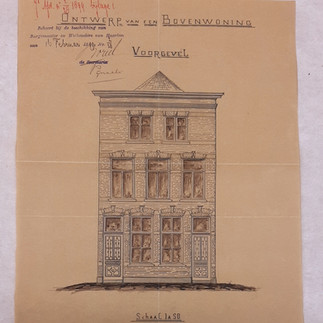Internship: First Aid Conservation with DP Conservation
- Fenna Engelke
- Mar 15, 2022
- 3 min read
Updated: Jun 22, 2022
Who is DP Conservation?
DP Conservation began from a need within the archives and paper collections in the Netherlands for conservators and technicians who could apply first-aid treatment to objects being prepared for activities such as rehousing and digitization. DP Conservation was founded by former employees of the National Archive (NL) Maik Gerritsen, Yukina Uitenboogaart and Joana Pedroso in 2013 when it became apparent that this service was needed by a variety of institutions. I had the pleasure of working with DP Conservation for three weeks and wanted to review my time with this type of treatment. Although I was only with DP Conservation for a short amount of time, my internship showed me just how desired the first-aid treatment was for archive collections throughout the Netherlands. Projects undertaken by DP Conservation spans the Netherlands and included collections from archives, libraries, and museums.
What is First-Aid treatment? In this context, first aid treatment refers to addressing the most basic damages and conservation issues that an object may need in order to later be digitized or rehoused. In the case of very fragmented objects, this can mean doing a lining in very thin Japanese tissue but most of the time this means dry cleaning, flattening folded edges, or doing only the most necessary of tear mending.
My experience: Within the two weeks I spent interning alongside DP Conservation, I was able to visit several archives and collections within the Netherlands. The first project I assisted on was with the Noord-Hollands Archief based in Haarlem which involved giving first-aid treatment and rehousing blueprints and other archive materials in preparation for digitization. This often involved unfolding blueprints, flattening them, and giving tear mends where necessary. Some of the building plans were on transparent papers which often needed some flattening along the edges and had tears which were treated with heat-set tissue.
Another collection we worked with was the Leiden University Archive, surveying the objects for damages and doing some first-aid treatment and we worked through it. DP Conservation has their own checklist that they use to document specifics about the objects which can help the private practice follow how much work they get through while also providing information to the institution about what types of treatments were performed as well as if there are any unique features the objects may have. This includes things like wax seals which are of interest to institutions that want to digitize their collection. Additionally, I was able to find some reused materials within the collection which included a declaration in English.
The third institution I visited was the Regional Historical Center in Breukelen which acts as regional archive for both Breukelen and surrounding communities. In this case there had been extra funding at the archive which they allocated towards first-aid conservation of some of the smaller community archive materials. Some of these materials were more damaged than what I had seen in pervious institutions and it was theorized that some of the materials may have once been stored in a metal container due to the rust stains seen on several objects.
One interesting thing that was found in the community archives held in Breukelen was a local format used for documents there. The pamphlet stitched documents had an extra flap in the front and the whole document would have been folded in half in order to create an envelope form.
Extra things of note:
The town of Breukelen is actually the namesake for Brooklyn, NY.
References: DP Conservation Website: http://www.dpconservation.nl/










































Komentarze